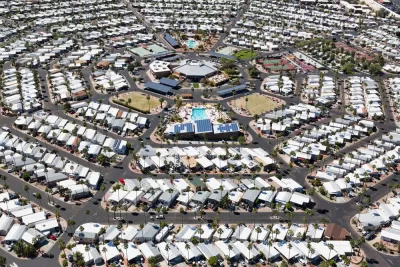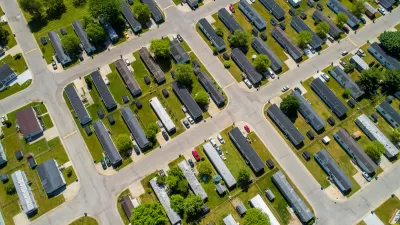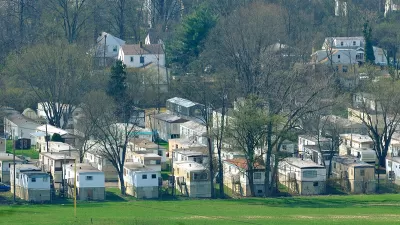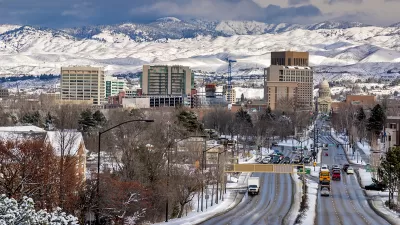When President Reagan slashed funding for low-income housing in the '80s, he set off a boom in manufactured housing. Now some think these homes might offer relief for those struggling to afford a home.

Manufactured housing has been an option for affordable homes for years, but it's not without its problems. "A new report from Apartment List calculates that one in 18 Americans, or 17.7 million people, live in a manufactured home nationwide; the average monthly housing cost is $564, versus $1,057 for a typical house or apartment," Adele Peters writes for Fast Company.
During the Reagan administration, manufactured home production boomed when cuts to low-income housing sent many looking for options. Since then, demand has faltered. Many see this as a problem with the perception of mobile homes, but there are other impediments as well. "One challenge is zoning–communities heavily restrict where the homes can be installed, whether on single-family lots or in traditional mobile home parks," Peters reports. Cities with big housing shortages, like San Francisco, have considered easing restrictions, to add supply to a tight housing market.
Some argue that because of their affordability and flexibility, mobile homes play an important role in the housing market. Still, owning a home on land you rent means manufactured home owners face risks from rising rents. What's worse, some models of homes lose value faster than their loans can be paid off, so home owners never earn equity. "And banks don’t offer regular home loans for manufactured homes, charging higher interest rates on chattel loans," Peters reports. Even with these challenges in expensive housing markets, some find manufactured housing their best option.
FULL STORY: Can manufactured homes help the housing crisis?

Alabama: Trump Terminates Settlements for Black Communities Harmed By Raw Sewage
Trump deemed the landmark civil rights agreement “illegal DEI and environmental justice policy.”

Planetizen Federal Action Tracker
A weekly monitor of how Trump’s orders and actions are impacting planners and planning in America.

The 120 Year Old Tiny Home Villages That Sheltered San Francisco’s Earthquake Refugees
More than a century ago, San Francisco mobilized to house thousands of residents displaced by the 1906 earthquake. Could their strategy offer a model for the present?

In Both Crashes and Crime, Public Transportation is Far Safer than Driving
Contrary to popular assumptions, public transportation has far lower crash and crime rates than automobile travel. For safer communities, improve and encourage transit travel.

Report: Zoning Reforms Should Complement Nashville’s Ambitious Transit Plan
Without reform, restrictive zoning codes will limit the impact of the city’s planned transit expansion and could exclude some of the residents who depend on transit the most.

Judge Orders Release of Frozen IRA, IIJA Funding
The decision is a victory for environmental groups who charged that freezing funds for critical infrastructure and disaster response programs caused “real and irreparable harm” to communities.
Urban Design for Planners 1: Software Tools
This six-course series explores essential urban design concepts using open source software and equips planners with the tools they need to participate fully in the urban design process.
Planning for Universal Design
Learn the tools for implementing Universal Design in planning regulations.
Clanton & Associates, Inc.
Jessamine County Fiscal Court
Institute for Housing and Urban Development Studies (IHS)
City of Grandview
Harvard GSD Executive Education
Toledo-Lucas County Plan Commissions
Salt Lake City
NYU Wagner Graduate School of Public Service





























